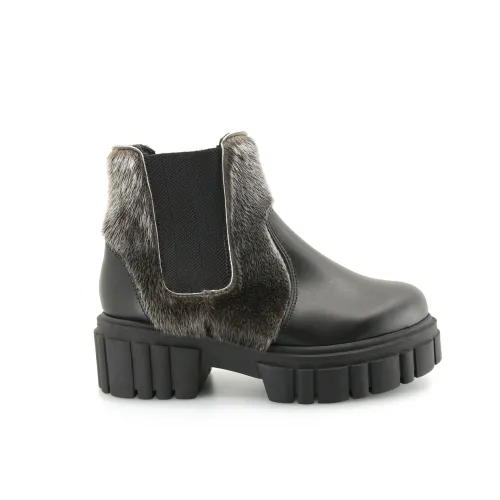Come visit us in Normandin, discover the Universe of BILODEAU!
Sustainable Development - Environmental Dimension
Sustainable Development - Environmental Dimension

Materials
Our love for wild Canadian fur is the best testament to the organization’s environmental values. We are proud to produce and promote this natural and biodegradable resource, especially in Canada, where governmental regulations foster its renewability. The mechanisms in place allowing for the health of various wildlife populations to be followed and monitored, for example, enable the responsible culling of a given species. In cases of at-risk species, quotas or even total bans are sometimes enacted to restrict hunting, depending on the location. In other words, management by the government encourages wildlife population control, allowing trapping only for species whose numbers are stable in order to maintain long-term ecological balance.
BILODEAU Canada adheres to and contributes to the laws, norms, and regulations in effect in Quebec and Canada. We make sure to only purchase legal furs, from vendors whose permits and/or authorizations guarantee their full legality.
We also strive to instill best practices for trapping, or what is often referred to as humane trapping. As part of our outreach mission, we welcome around 10,000 visitors every year to our facilities, through The BILODEAU Canada Experience. The aim is to introduce people to the work we do and promote awareness for environmental protection. We place particular emphasis on respecting rules and regulations and adhering to humane trapping practices.
Manufacturing
Innovation and creativity are part of the company's strengths. In recent years, several projects inspired by the concepts of circular economy and eco-design have been realized. These different concepts are linked to sustainable development.
Sustainable Design
Eco-design or sustainable design seeks to optimize the use of raw (new) materials.
Working with production software allows us to optimize the placement of patterns to reduce waste related to cutting textiles. For furs, the expertise developed by our craftsmen has allowed for optimization of the cutting process, using different techniques such as end-to-end assembly.
Completely eliminating all waste from production lines is of course impossible, but we continually analyze our materials and processes to make sure we’re optimizing their use the best we can. A team is specifically tasked with examining methods to reduce loss and reuse remnants, by transforming them, recycling them, or simply placing them for commercial sale. In doing so, over the years we have been able to build structural commercial partnerships and increase the competitiveness of the organization, helping the BILODEAU Canada brand become a leader in its field.
The search for alternative fibers of other origins is also a goal for the company. Products have been developed using a variety of natural and synthetic wools, felts, and even milkweed linings. These initiatives can be more broadly grouped under the umbrella of sustainable design.


Circular Economy
The principles of circularity have been useful for tackling a number of issues, such as the example of remnants mentioned above.
The example of sawdust used for the drying of pelts serves as a further example; our operating procedure allows us to optimize the usage of 7 to 8 tons of sawdust annually. A first phase of circularity is accomplished during the purchasing of sawdust from a company that reuses waste derived from industrial hard wood (flooring). A second phase is accomplished during the sawdust’s end-of-life : when the material is no longer useable for the treatment of furs, it is sent to an agricultural producer that repurposes it as organic bedding for barns.
When we first purchase pelts or full animals from trappers, we work to maximize the use of all parts. The fur and hide are worked and treated to create coats, hats, boots, mittens, etc. The bones, teeth, and claws are gathered and sold to make artisanal decorative objects or for use by the film industry. The carcass is sold as bait for trappers and sometimes trainers of sled dogs. During the brushing of pelts, the hairs are kept for making wool and other related products. Overall, we work to make optimal use of the entirety of the animal, respecting its natural origins.
In 2022, we undertook a coaching process with the Centre Québécois de Développement Durable (CQDD) in order to push our thinking and structure our approach towards a more official path.
Other dimensions
Learn more about the other two dimensions of sustainable development at BILODEAU Canada:




